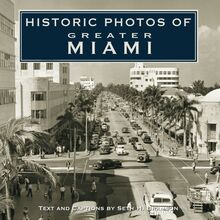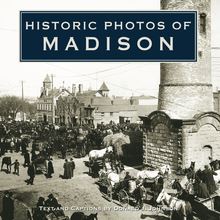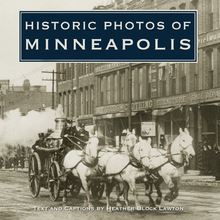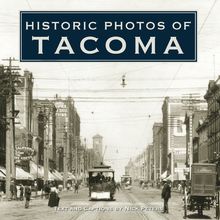Historic Photos of Indiana , livre ebook
183
pages
English
Ebooks
2010
Vous pourrez modifier la taille du texte de cet ouvrage
Obtenez un accès à la bibliothèque pour le consulter en ligne En savoir plus
Découvre YouScribe en t'inscrivant gratuitement
Découvre YouScribe en t'inscrivant gratuitement
183
pages
English
Ebooks
2010
Vous pourrez modifier la taille du texte de cet ouvrage
Obtenez un accès à la bibliothèque pour le consulter en ligne En savoir plus
Publié par
Date de parution
01 janvier 2010
Nombre de lectures
3
EAN13
9781618583987
Langue
English
Poids de l'ouvrage
25 Mo
This is the land of Hoosiers. Of George Rogers Clark’s conquest at Vincennes, a key victory for the Revolution. Of covered bridges. A fledgling automobile industry. Notre Dame. The National Road and the Lincoln Highway and Carl Fisher. Cole Porter. The Milwaukee Steamer and the Rumely Oil Pull Tractor. Riverboats on the Wabash and the Ohio. The Wabash and Erie Canal. Interurbans. James Whitcomb Riley and George Ade. Small towns and big cities. Street Fair Days in Peru. The first state capitol at Corydon. Steel in Gary. Evansville’s Municipal Market. Airmail by balloon. Union Station in Indianapolis and the Indy 500. Dunes along the Lake Michigan coast. Gandy dancers, circus parades, rollerskate basketball. Of sugar beets, sugar maples, and soybeans.
This is Historic Photos of Indiana, filled with nearly 200 photographs reproduced in vivid black-and-white, with captions and introductions, showing the reader the places, people, and events that helped shape the lore and history of the Hoosier State.
Publié par
Date de parution
01 janvier 2010
Nombre de lectures
3
EAN13
9781618583987
Langue
English
Poids de l'ouvrage
25 Mo
HISTORIC PHOTOS OF
INDIANA
T EXT AND C APTIONS BY S COTT M. B USHNELL
Madison was among Indiana s most successful communities when this photograph was taken in 1866. Its population had doubled in the 1840s because of its location on the Ohio River and the commerce it generated, and continued to grow in the next decade because of the Madison Indianapolis Railroad, the first railroad built in the state.
HISTORIC PHOTOS OF
INDIANA
Turner Publishing Company
200 4th Avenue North Suite 950
Nashville, Tennessee 37219
(615) 255-2665
www.turnerpublishing.com
Historic Photos of Indiana
Copyright 2010 Turner Publishing Company
All rights reserved.
This book or any part thereof may not be reproduced or transmitted in any form or by any means, electronic or mechanical, including photocopying, recording, or by any information storage and retrieval system, without permission in writing from the publisher.
Library of Congress Control Number: 2009933005
ISBN: 978-1-59652-553-5
Printed in China
10 11 12 13 14 15 16-0 9 8 7 6 5 4 3 2 1
C ONTENTS
A CKNOWLEDGMENTS
P REFACE
R OADS TO P ROSPERITY (1850-1889)
P ROGRESS INTO A N EW C ENTURY (1890-1920)
G OOD T IMES , B AD T IMES, AND W AR (1921-1945)
A G ROWING AND S HIFTING P OPULATION (1946-1960 S )
N OTES ON THE P HOTOGRAPHS
S OURCES
The beginning of a balloon race in 1909 was a perilous moment as the ground crew struggled to maintain control of the craft while the pilot clambered aboard. Only the ropes of the Indiana -one of nine hot-air balloons in this race-are visible at the nascent Indianapolis Motor Speedway.
A CKNOWLEDGMENTS
This volume, Historic Photos of Indiana , is the result of the cooperation and efforts of many individuals and organizations. It is with great thanks that we acknowledge the valuable contribution of the following archives for their support, as well as the efforts of many individuals, including:
John Beatty and Curt B. Witcher of the Allen County Public Library; Thomas Castaldi, Allen County Historian; Beau Cunnygham, Tipton County Public Library; Walter Font, Curator, Allen County-Fort Wayne Historical Society; Janelle Graber, director, Eckhart Public Library, Auburn; James Harlan, director, Wayne County Historical Museum, Richmond; Jamey Hickson, Lebanon Public Library; B. Joan Keefer, director, Indiana Room, Huntington City Township Public Library; Sue King, Archivist, Morrisson-Reeves Library, Richmond; the Library of Congress; Stephen McShane, director, Calumet Regional Archives, Indiana University Northwest, Gary; Nancy Masten, archivist, Miami County Historical Society; James Rodgers, director, and Fern Schultz at La Porte County Historical Society; Jan Shupert-Arick, Lincoln Highway Association; John Martin Smith, DeKalb County Historian; Mark Vopelak, Brent Abercrombie, and Marcia Caudell, Indiana State Library; Brenda Williams, director, Princeton Public Library; Gregg Williamson, director, William H. Willennar Genealogy Center, Auburn
Steven Cox and Michael McCalip of Turner Publishing Company are due considerable gratitude for steering this book through editing and production.
My deep appreciation is due John Walls for his professional skills in recognizing and scanning old photographs as well as to E. J. Richards and Ed Breen for their work in finding rarely seen historic images. Good friends who appreciate history and the art of photography-and who are willing to drive all over the state of Indiana to find them-are a priceless commodity.
Last, none of this work could have been accomplished without the support and encouragement of my wife, Barbara, who makes each Indiana sunrise a wondrous event.
-------
With the exception of touching up imperfections that have accrued with the passage of time and cropping where necessary, no changes have been made. The focus and clarity of many images is limited by the technology and the ability of the photographer at the time they were taken.
P REFACE
There are many images of Indiana that are common to the American mind. One imagines the Corn Belt sweeping across Indiana s torso like a shawl. Others see the great manufactories of the late nineteenth century, arising from the sweat and determination of thousands of workers, native-born and immigrants. Some point to the natural beauty of the landscape interrupted by few, if any, impediments to the panoramas that seem to sweep on without end. More cite the cities that grew from stump-pocked crossroads into major metropolitan areas in a matter of decades. A few know of the literature, art, and music produced by Indiana artists in the nineteenth and early twentieth centuries who contributed to an understanding of who we are as a nation. Those who follow agriculture recognize that Indiana is among the nation s leaders in the production of corn, soybeans, and hogs. There are car enthusiasts who will tell you that until 1905 Indianapolis had more automobile manufacturers than Detroit. Demographers will note that while Indiana is the smallest of the contiguous states west of the Appalachian Mountains, it ranks 16th in the nation s population.
To an extent Indiana has always been a checkerboard of contradictions. Slavery, for example, was outlawed in the Northwest Territory from which the state was carved, but that was not the popular sentiment. A constitutional convention in 1802 unsuccessfully tried to make slavery legal, and in 1851 the state passed a constitution that prohibited African-Americans from settling in Indiana and disfranchised those freed slaves living within its borders. Yet studies show there were probably never more than 250 slaves in the state, and when it came to the Civil War, more than 24,000 men from Indiana died for the Union cause.
The state has also played an unusual role in the nation s politics. Indiana is the only state with a grandfather and grandson to both serve as President, although neither William Henry Harrison nor Benjamin Harrison were born in Indiana. The elder Harrison was the first president to die in office, after contracting pneumonia during his hour-long inaugural that featured his lengthy address. Benjamin Harrison, too, holds an unusual distinction in the nation s line of presidents: He was preceded and succeeded by the same man, Grover Cleveland. Harrison defeated the incumbent in the election of 1888 to become the nation s 23rd president; however, in part because of the economy and in part because Harrison refused to leave the bedside of his dying wife, Cassie, in order to campaign, he lost to Cleveland in 1892. Indiana is also sometimes referred to as the State of Vice-presidents because of the number of residents to hold the office. Five men have served as vice-president of the nation: Schuyler Colfax, Thomas A. Hendricks, Charles W. Fairbanks, Thomas Marshall, and J. Danforth Quayle. Three of the men-Hendricks, Fairbanks, and Quayle-were also unsuccessful candidates for the presidency. Three other men were also unsuccessful: George W. Julian, William Hayden English, and John W. Kern. The reason for so many Indiana candidates was simple: In the middle 1800s, Indiana was among a handful of states to hold presidential elections in October. The outcomes were considered a good indicator for the presidential vote in the rest of the nation in November. A strong campaign with a homegrown vice-presidential candidate was viewed as a way of winning the election in Indiana and influencing November voters. By way of comparison, only one Indiana man has been named to the U.S. Supreme Court. Sherman Minton served as a justice from 1949 to 1956.
Then there is the issue of Indiana s nickname. Despite the years of searching by professional historians and just plain curious folks, no one really knows the origin, or meaning, of the word Hoosier. A heroic effort at research by Jeffrey Graf of the Herman B. Wells Library at Indiana University uncovered different spellings for the term and its derivation. The definitions ranged from Who s here? to an Indian word for corn. Some believe there is a connection with a man named Hoosier or Howsier who built a canal near Louisville and whose workers were known as Hoosier s men. Others, like James Whitcomb Riley, maintained its origins lay with the ornery proclivities of early settlers, who were said to bite off noses and ears during a fight. Some of these stories end with the victor wearing the loser s ears on his belt, to which someone asks, Whose ears?
Wherever you land on this issue, permit me the temerity to speak for my adopted state and offer the point of view once attributed to nineteenth-century writer Maurice Thompson: Say Hoosier, if you like, but say it with admiration. This is a state with a history that many historical museums, genealogy societies, and libraries have preserved. This volume of photographs, I hope, will demonstrate that their effort has not been in vain.
-Scott M. Bushnell
There has been a good deal of nostalgia about the Wabash and Erie Canal since its construction from Lake Erie to the Ohio River at Evansville during the years 1832 to 1853. Few reminiscences could be so romantic, though, as this image showing a wedding party aboard an old canal barge-complete with band and well-wishers-in the town of Attica on May 16, 1872.
R OADS TO P ROSPERITY
(1850-1889)
By the 1850s Indiana was recovering from the nightmare of being on the brink of bankruptcy a decade earlier. The state had made two mistakes in 1834: One was to use public funds to undertake a massive program to build canals and turnpikes; the second was to discount the role that railroads could play in efforts to improve transportation. By 1840, expenditures were higher than expected and revenues were falling short, leaving Indiana all but bankrupt. The idea of state-owned enterprises was dead.
One aspect of the program, however, showed promise. The state s pioneer railroad, the Madison Indianapolis, was a success by 1850. Its concept was simple and provide














